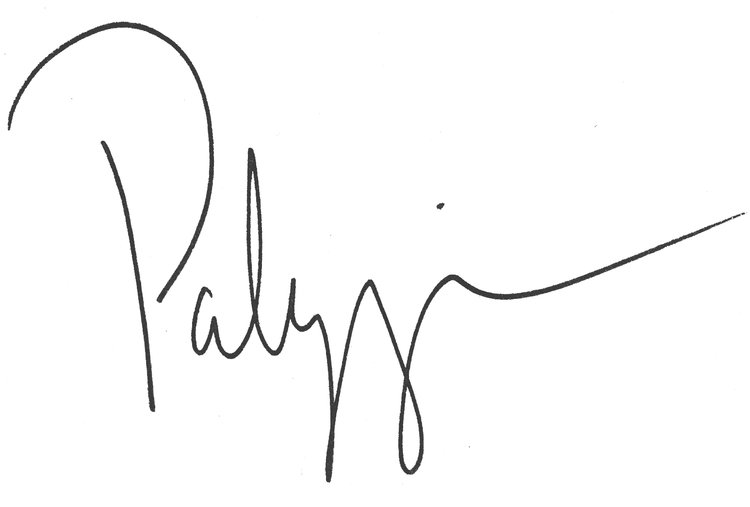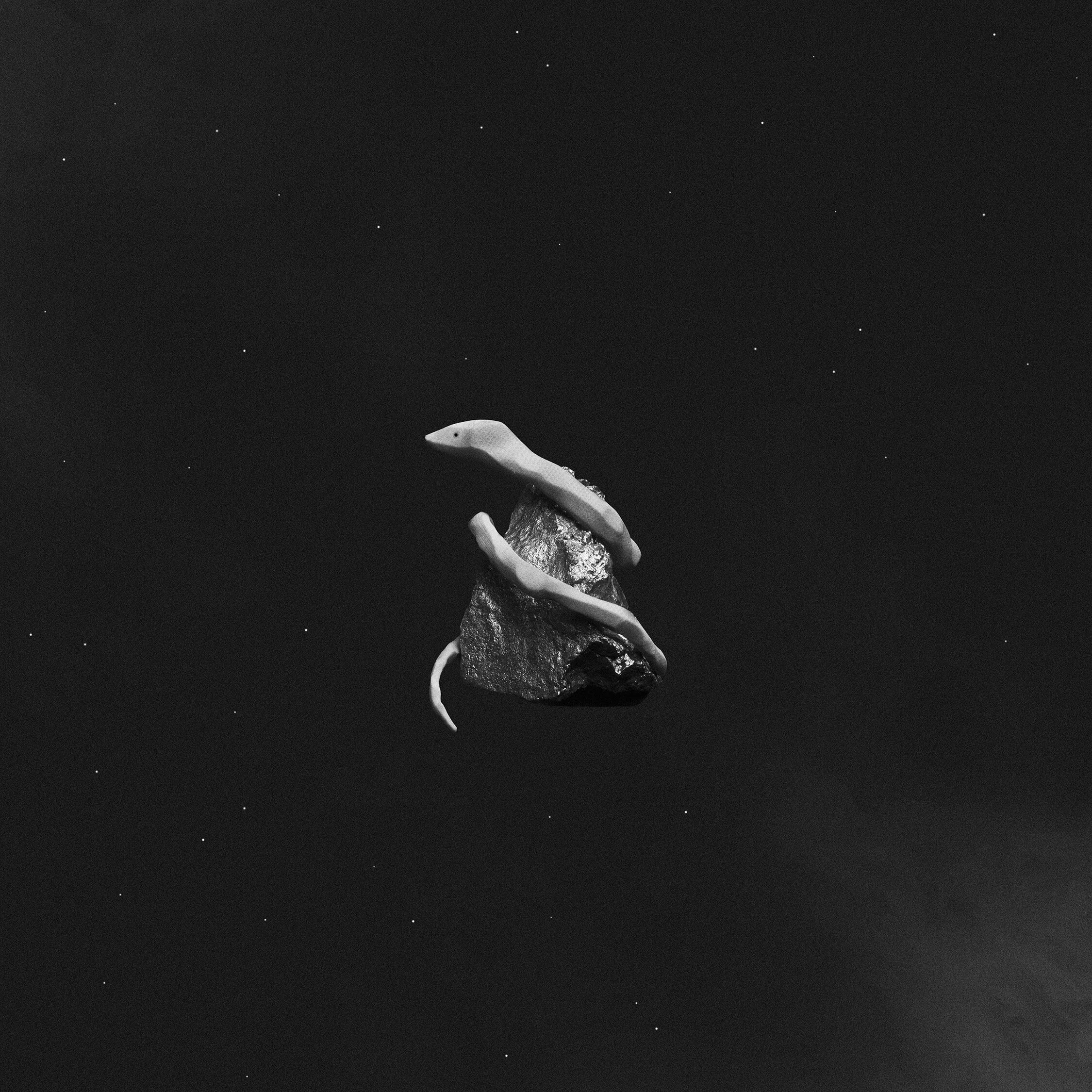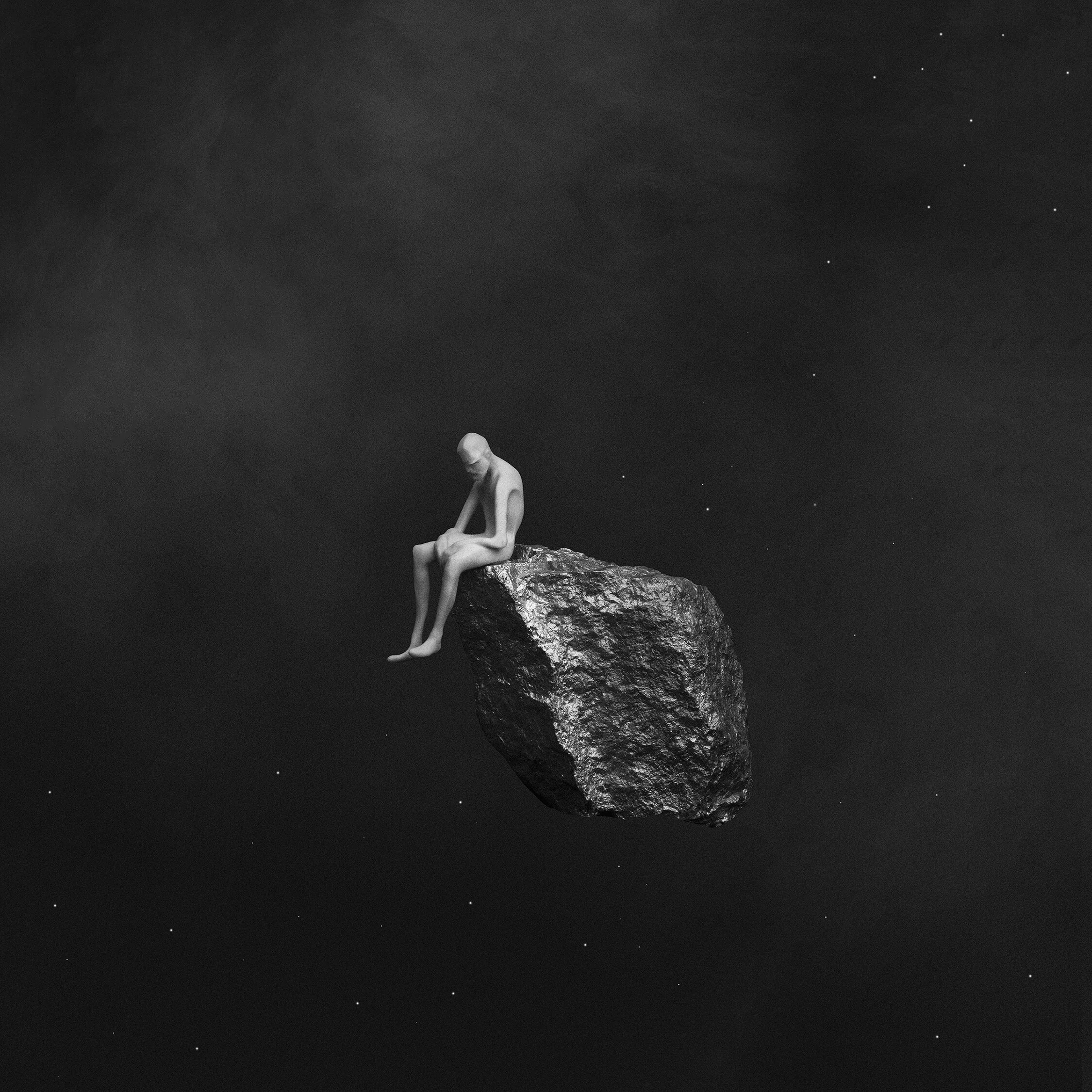The view from my bedroom (left) | The little prince, 2020 (right)
The little prince
As a young boy, I wanted to become an astronaut. I spent countless hours using my View-Master to explore the universe, imagining that one day I would see the planets with my own eyes. Recently, I found myself sleeping in my childhood bed, which was smaller than I remembered. Everything felt both familiar and foreign, as if the objects were from a previous life, and I was just discovering them for the first time. Once the feelings of nostalgia faded, thoughts entered my mind about failing to become who I wanted to be. Here I was – decades later – a stranger in a bed that was once my sanctuary.
The little prince is an inter-textual installation of photo-based work that draws upon the feelings of failed expectations and alienation, crafting a narrative that allows the viewer to visit seven fictive planets. Paluzzi expands on this work by drawing images and videos from his personal archive to remind himself that even while travelling through outer limits of the universe he brings his past with him.
“I have met children who want to know what a black hole looks like; what is the smallest piece of matter; why we remember the past and not the future; and why there is a universe.”
Birthday party VHS, 1991
2020 | Neeko Paluzzi | 5 minutes
Single channel video presented on a 15-inch cathode ray tube television
I have no recollection of receiving a View-Master during my third birthday party, but because my father videotaped it, I have vague, pseudo-memories of that moment.
Birthday party VHS, 1991 was created specifically for The little prince, interweaving portions of my third birthday party with visuals that have inspired this exhibition.
Universe, 1960
1960 | Directed by Roman Kroitor and Colin Low
Single channel video presented on a 15-inch cathode ray tube television
“Creating a vast, awe-inspiring picture of the universe as it would appear to a voyager through space, this film was among the sources used by Stanley Kubrick in his 2001: A Space Odyssey. Realistic animation takes you into far regions of space, beyond the reach of the strongest telescope, past the Moon, the Sun, and the Milky Way into galaxies yet unfathomed.”
-National Film Board of Canada
Moon, flattened 1968
2019 | Neeko Paluzzi
97 x 366 cm | 3D-etched wood with acrylic paint
Apollo 8 was a NASA space mission that took three astronauts around the Moon in 1968. This occurred a year before NASA landed on the surface of the Moon with Apollo 11, taking humans for the first time in our history beyond our ancestral (and celestial) home.
During the Apollo missions throughout the 60s and 70s, astronauts photographed their experiences. Apollo 8, in particular, produced one of the most iconic photographs of all time –– Earthrise by William Anders. This photograph captures the perspective of Earth rising behind the Moon’s horizon, just like the Sun does on Earth every day. This subtle shift in perspective solidified for many that the Earth is just a small sphere floating in seemingly empty space.
Moon, flattened 1968 takes Apollo 8’s photographs of the Moon’s surface and reproduces them three-dimensionally. As viewers stand in front of these sculptures, they experience to scale what Anders would have seen through his tiny window.
Homunculus
2019 | Neeko Paluzzi
20 x 20 cm | Pigment ink on cotton rag
The figures in Homunculus reference the illustrations in The Little Prince by Antoine de Saint-Exupéry, which features a young boy exploring the universe. Along the way he meets narrow-minded adults and discovers that wisdom does not come with age.
To create the characters in Homunculus, Paluzzi’s body was 3D-scanned by one hundred and thirty cameras. The digital textures of his skin were then manipulated and morphed into the seven characters. Once the figures were finished digitally, they were 3D-printed in sandstone and photographed in Paluzzi’s studio.
Much older than the little prince, Paluzzi is simultaneously the narrator of his own story – though an unreliable one – and a character whom he controls. The act of using his own body as a vessel, and then manipulating it, emphasizes this duality. He has fictionalized himself by creating doppelgängers in an attempt to confront, categorize, and conquer troubling aspects of his own reality.











